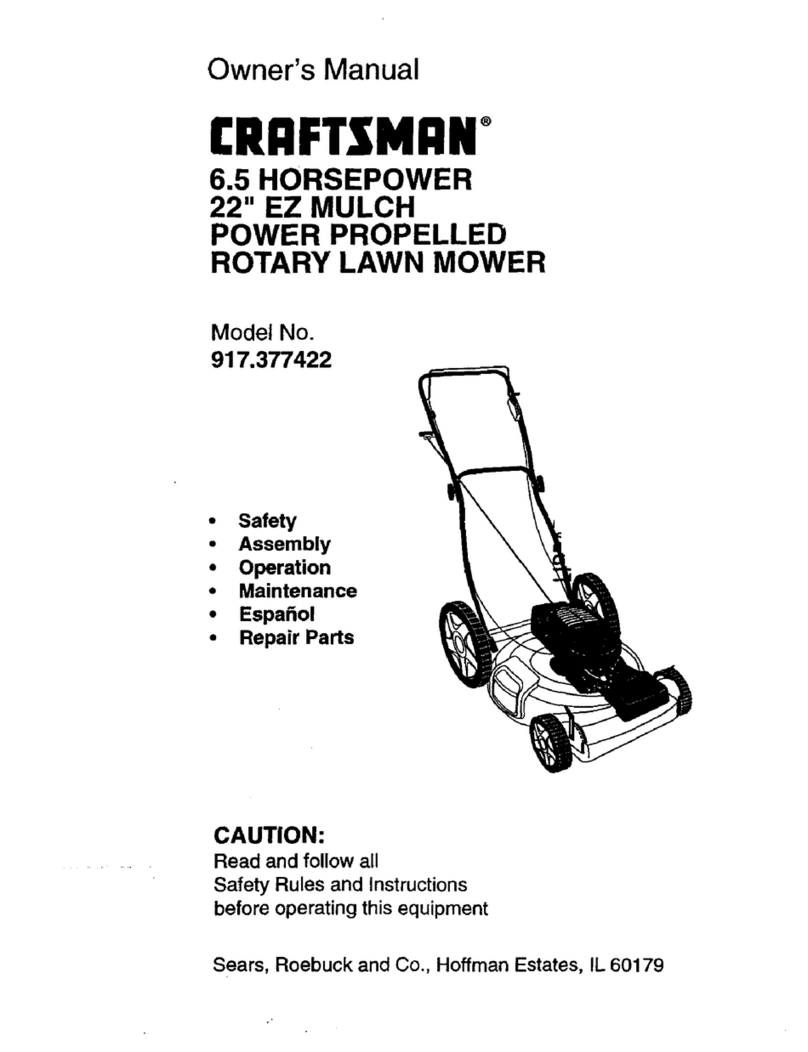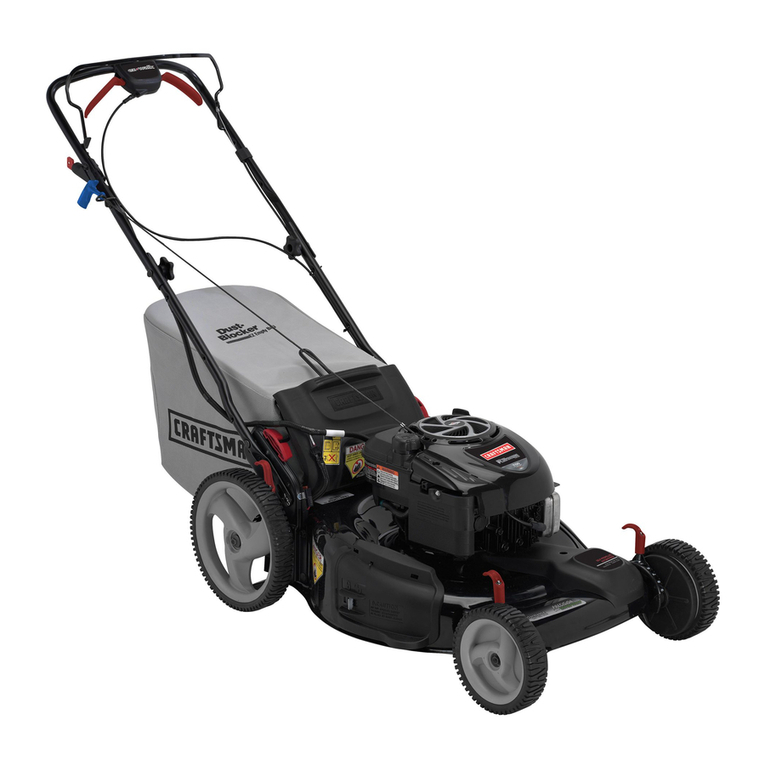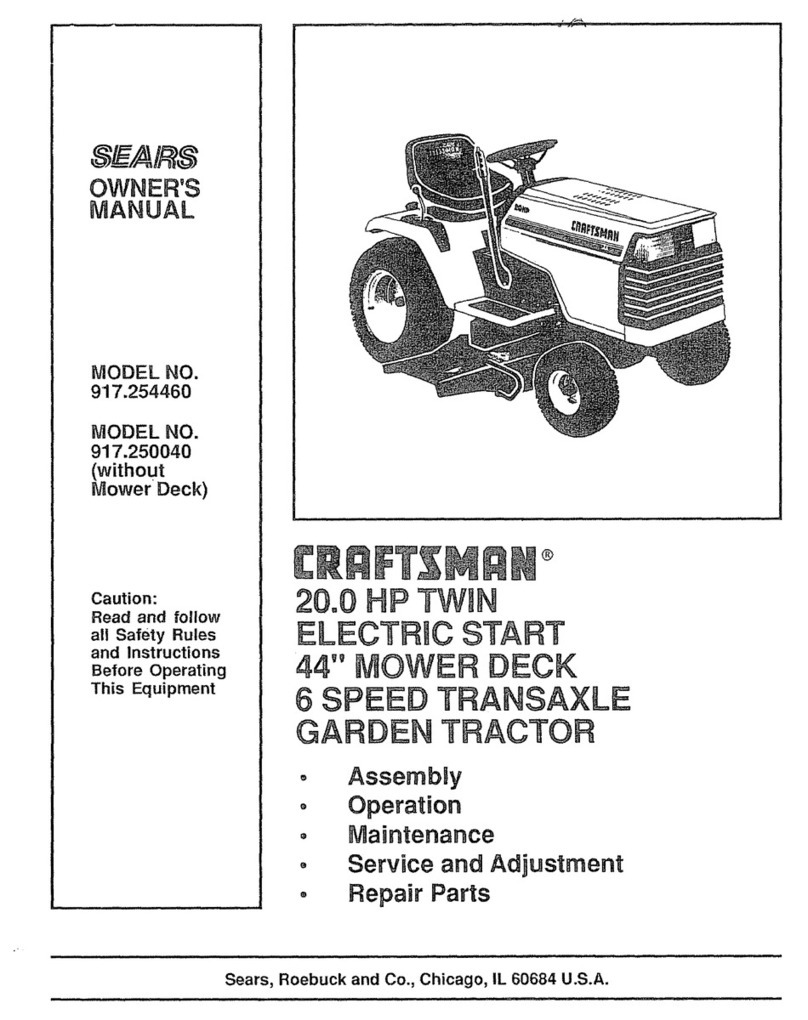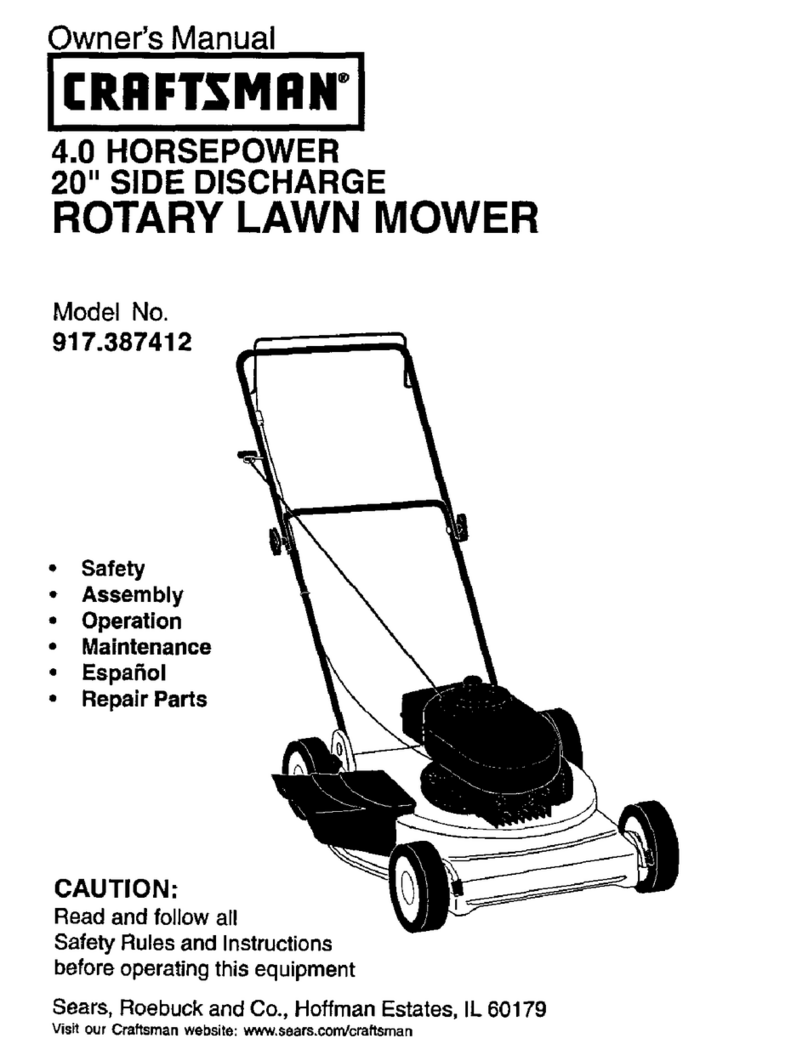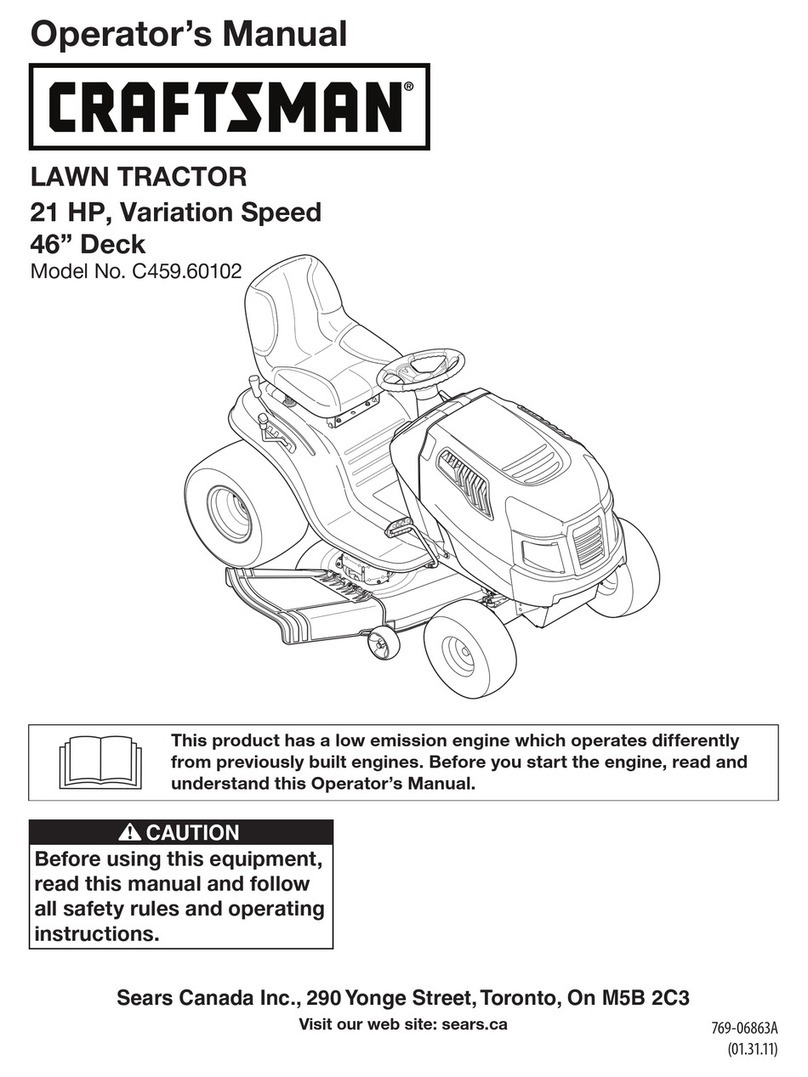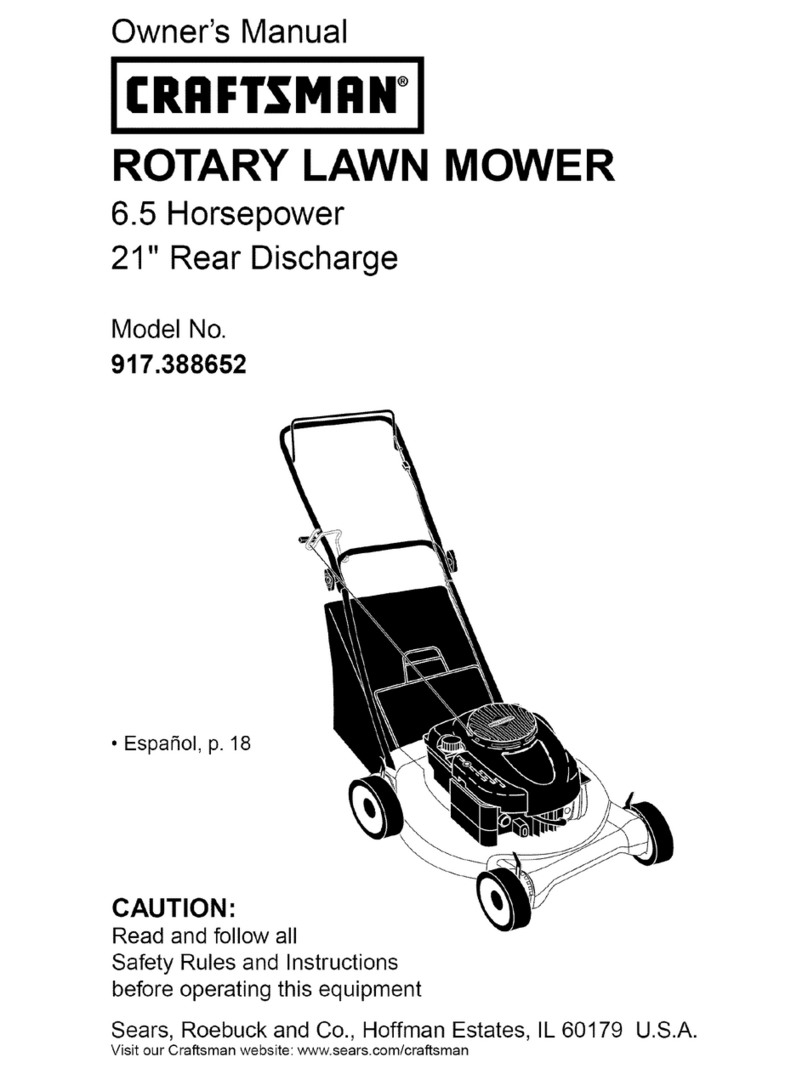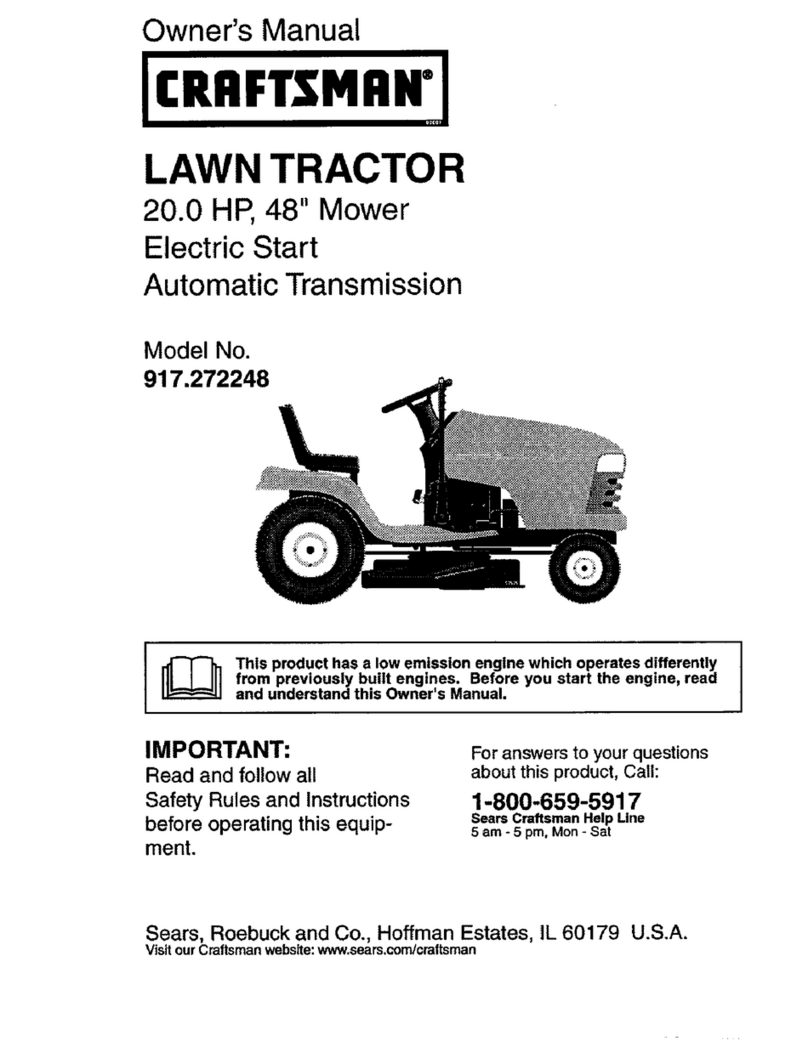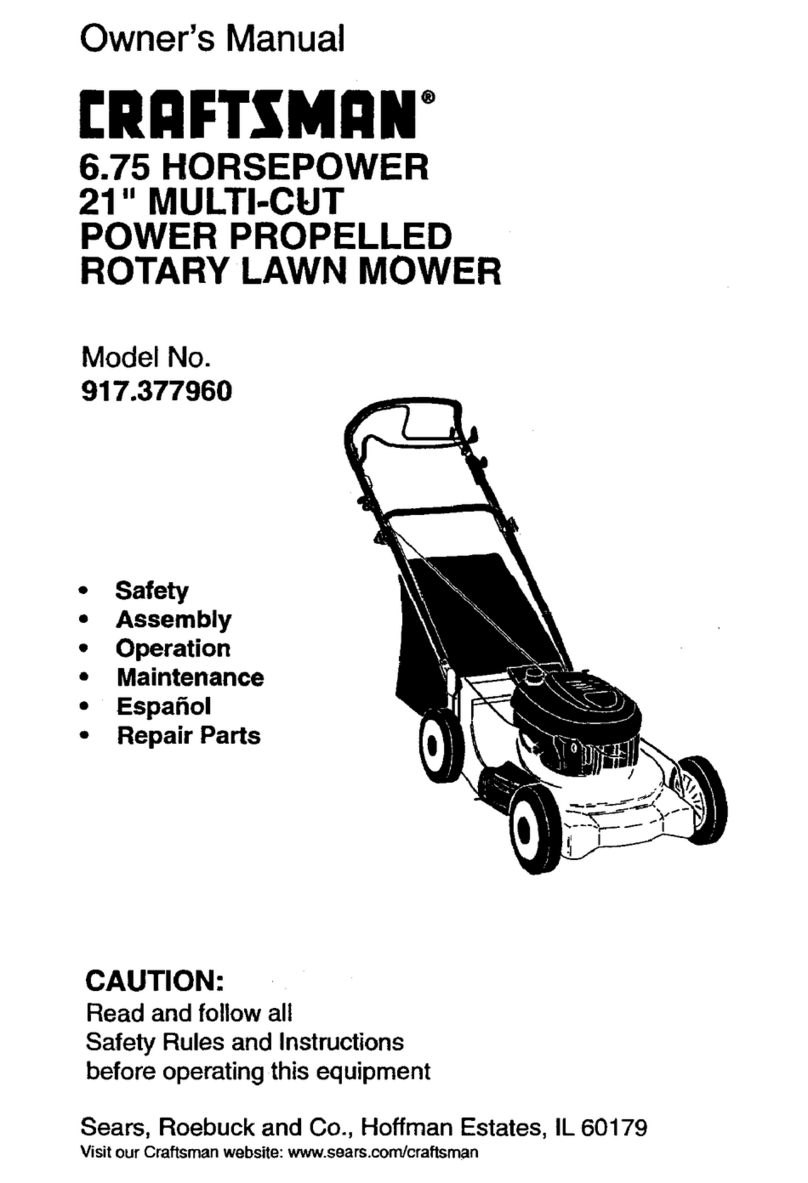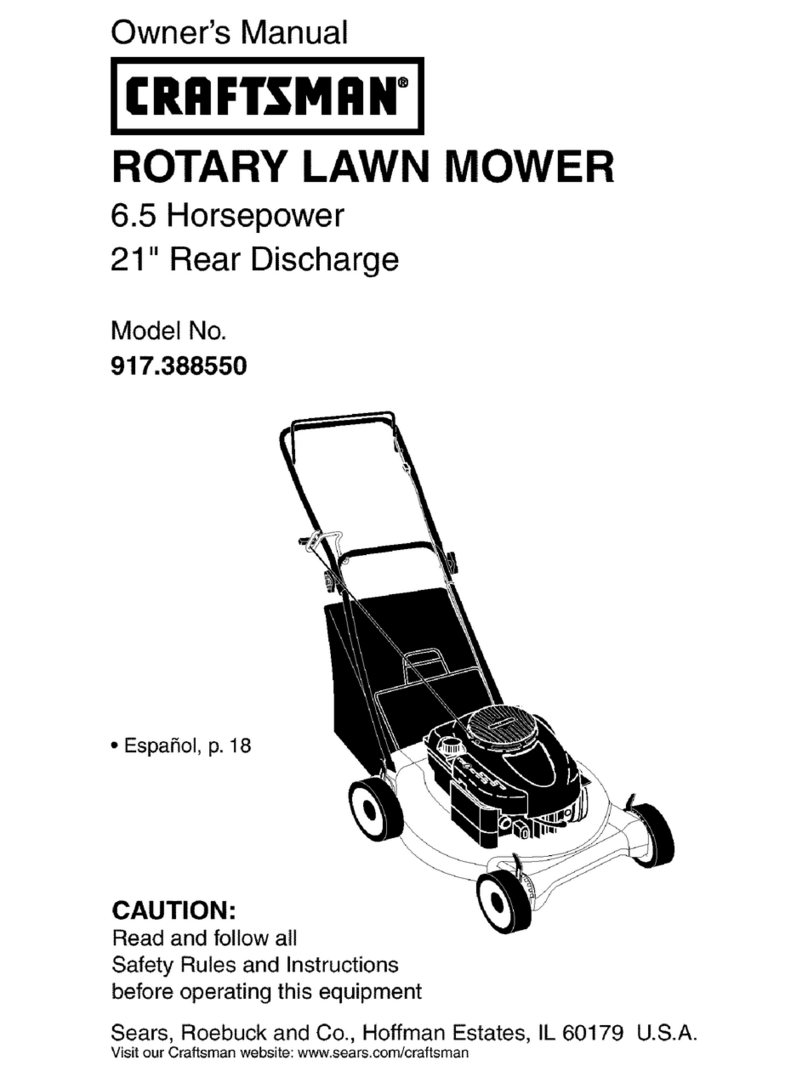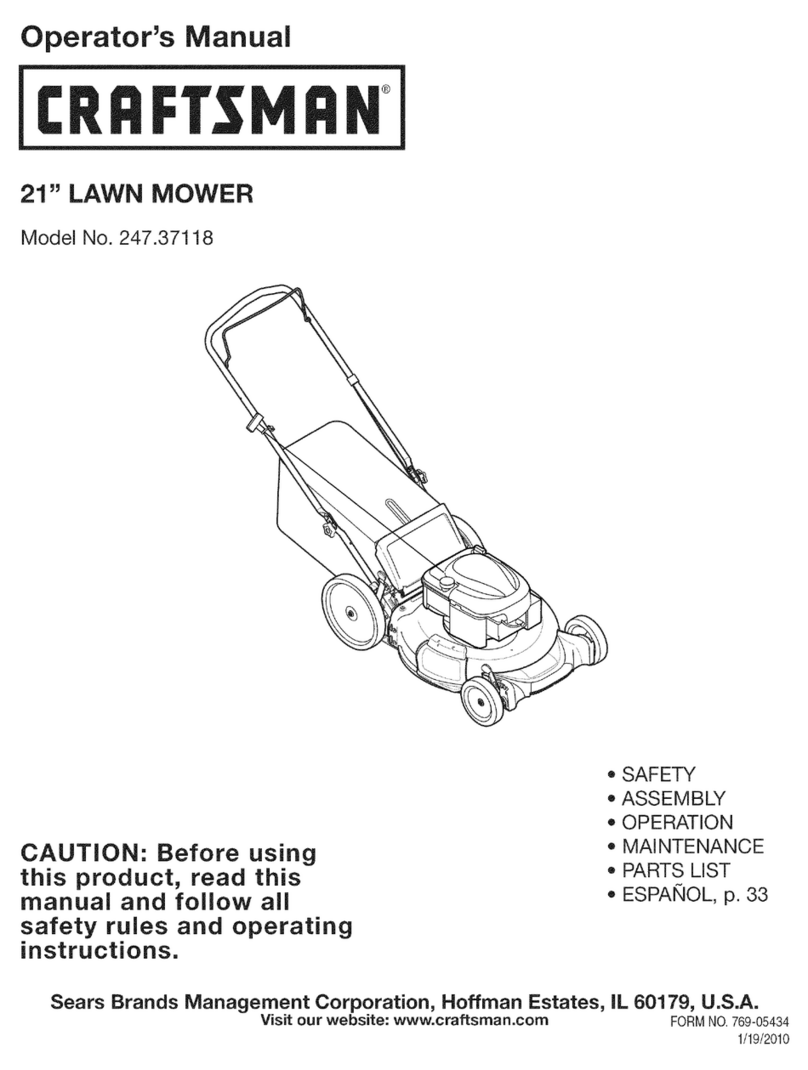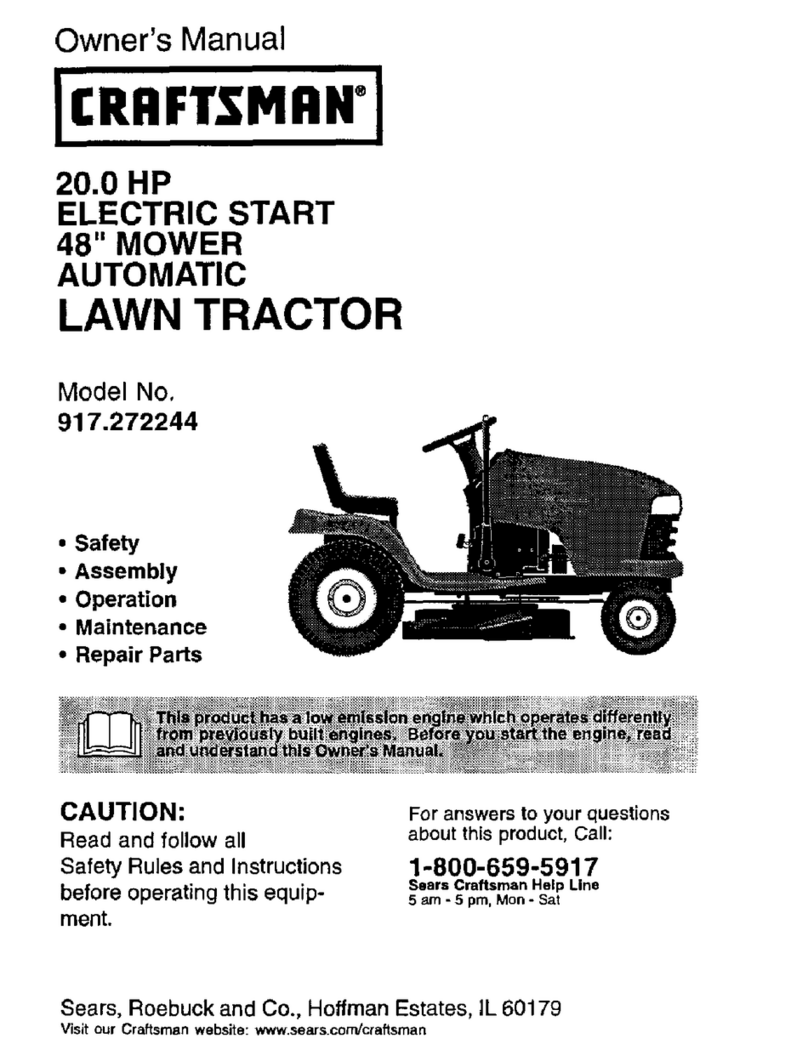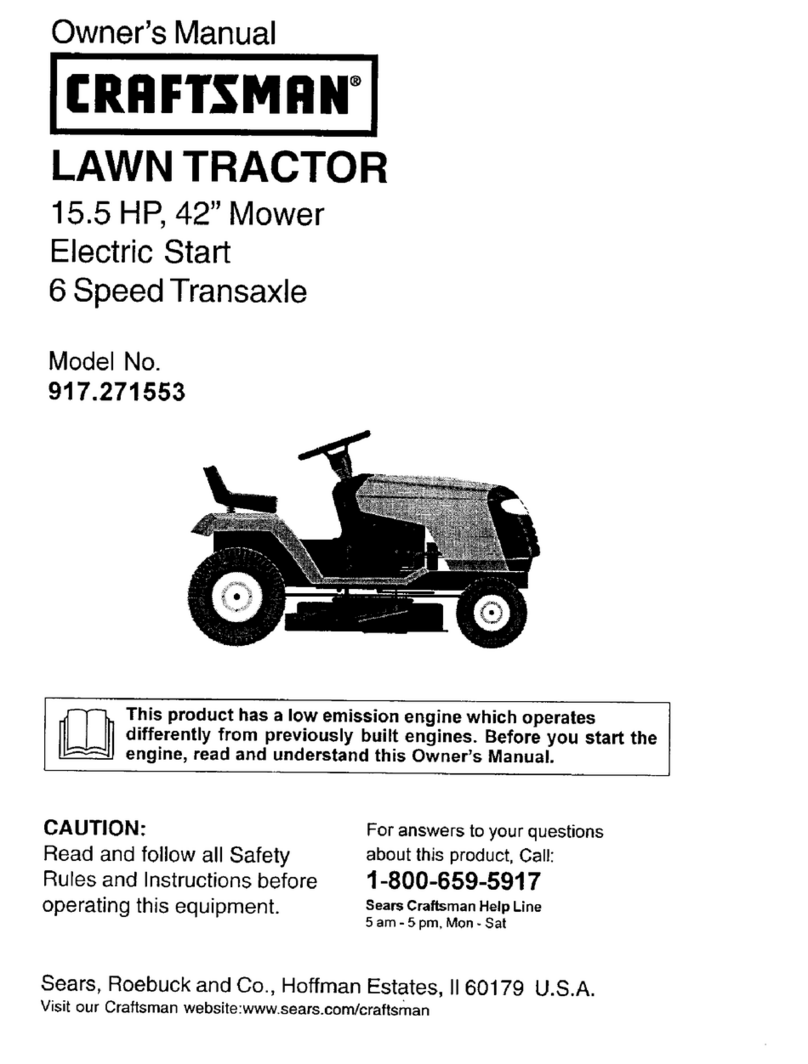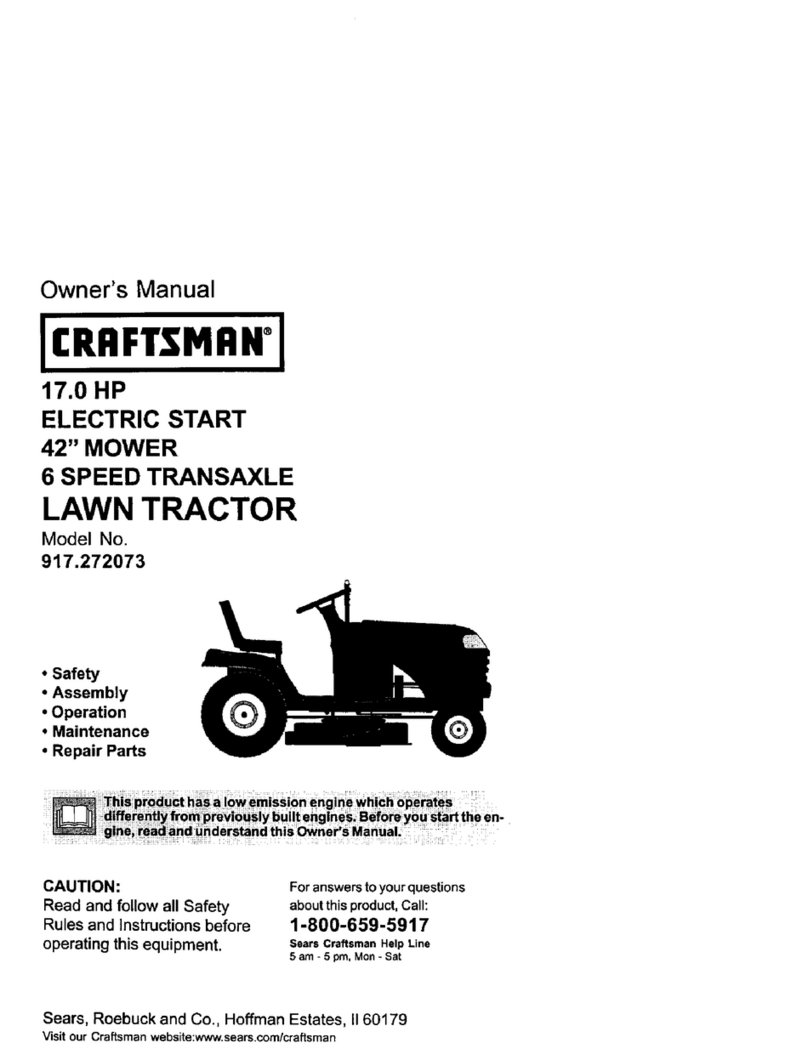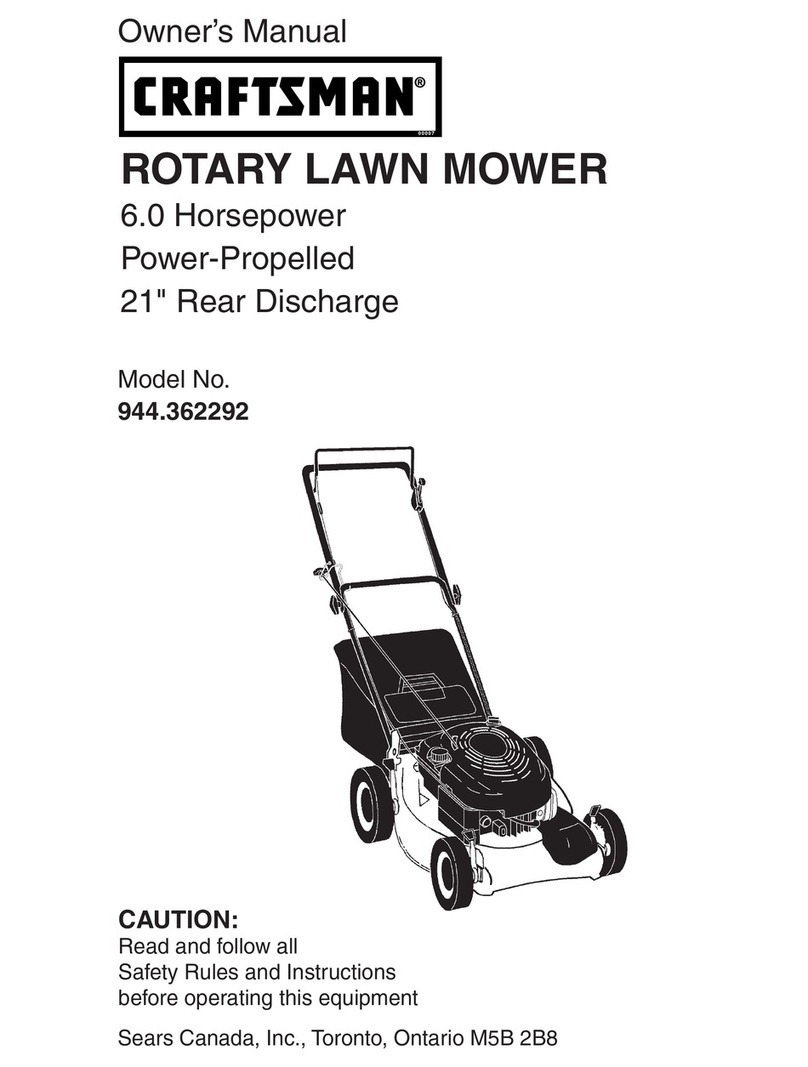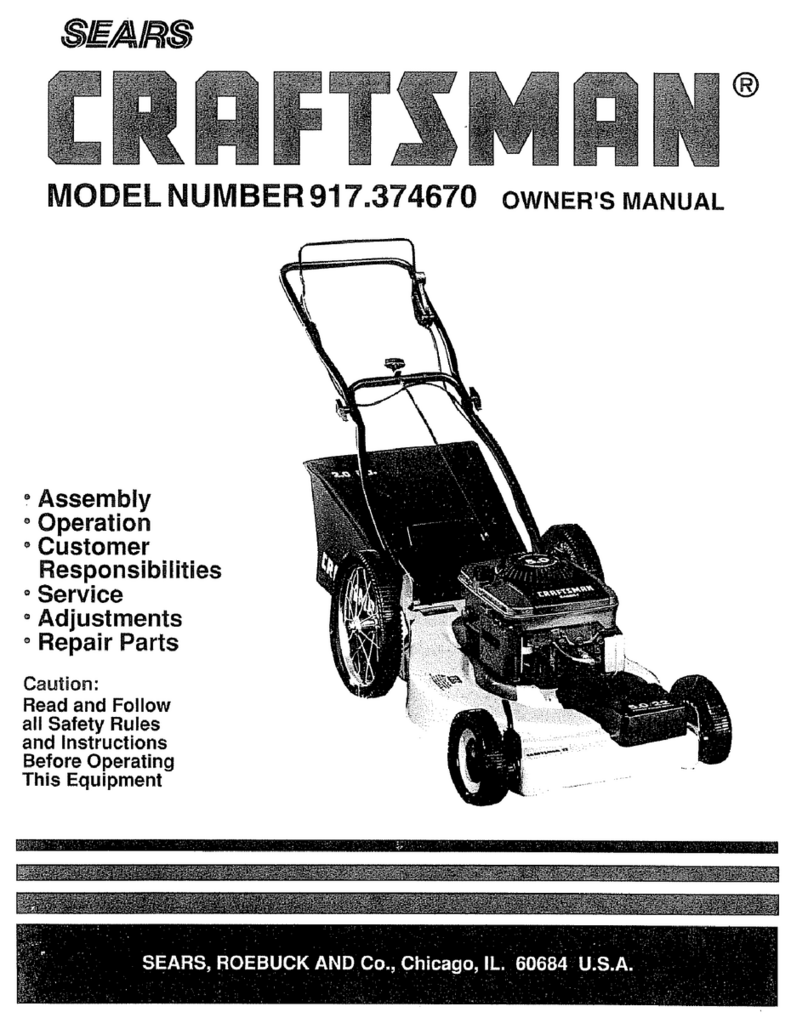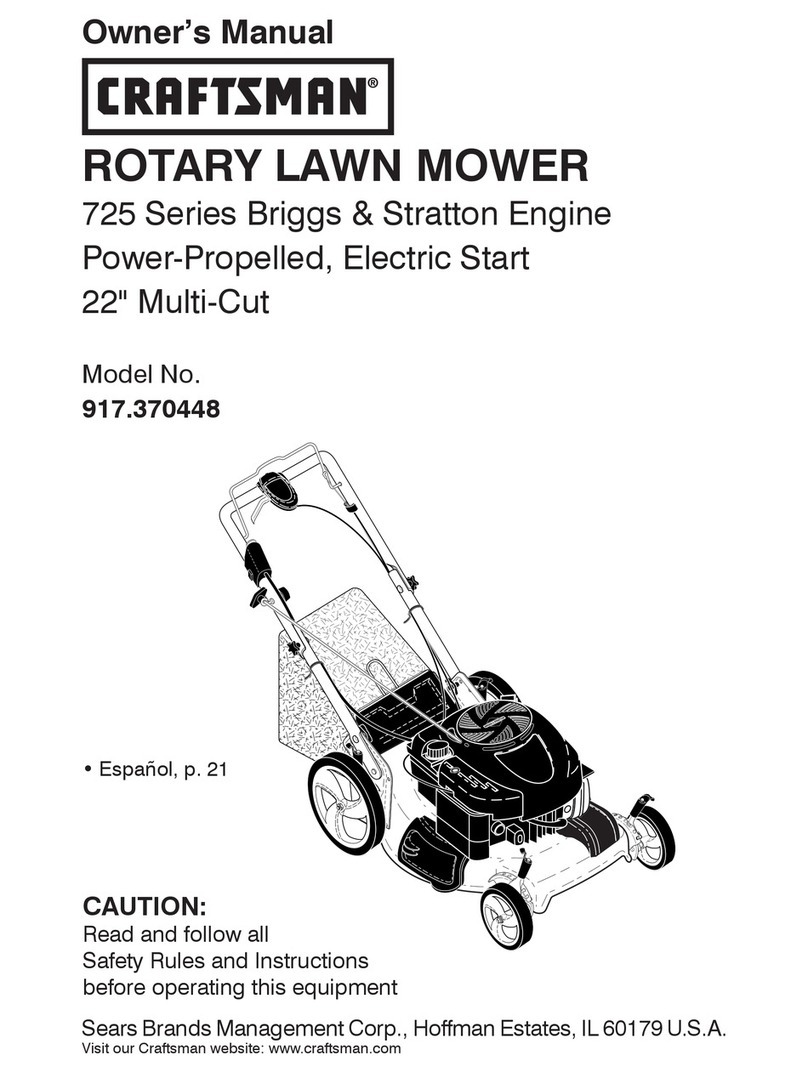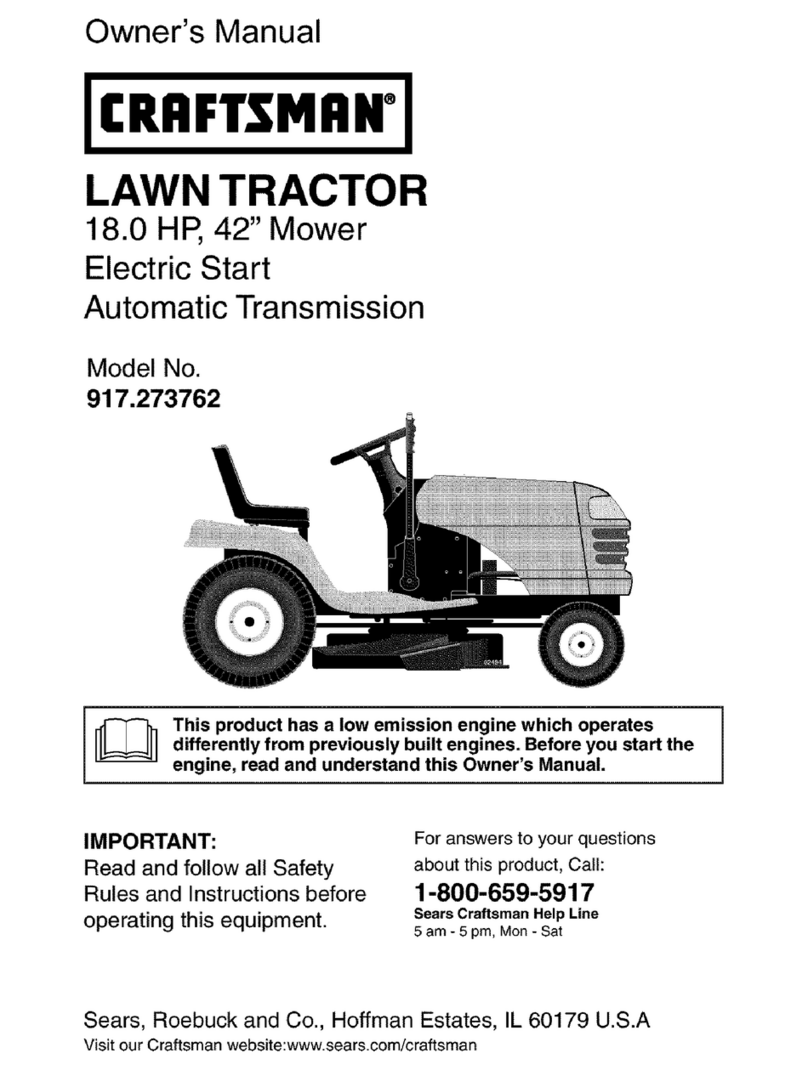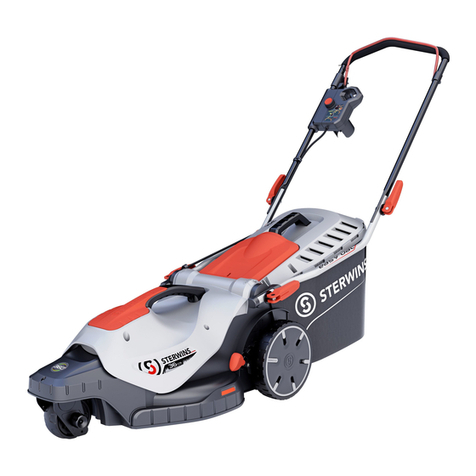TABLE OF CONTENTS
SAFETY RULES ............................................................ 2
PRODUCT SPECIFICATIONS ...................................... 3
CUSTOMER RESPONSIBILITIES ..................... 3, 17-20
WARRANTY .................................................................. 3
TRACTOR ACCESSORIES .......................................... 5
ASSEMBLY ............................................................. 7-10
OPERATION .......................................................... 11-16
MAINTENANCE SCHEDULE ..................................... 16
SERVICE AND ADJUSTMENTS ........................... 21-27
STORAGE ................................................................... 28
TROUBLESHOOTING ........................................... 29-30
REPAIR PARTS -TRACTOR ................................ 32-47
REPAIR PARTS -ENGINE .................................... 50-55
PARTS ORDERING/SERVICE ............... BACK COVER
INDEX A
Accessories ........................................... 5
Adjustments:
Brake ............................................. 23
Carburetor .................................... 27
Mower
Front-To-Back ......................... 22
Side-To-Side ........................... 22
Throttle Control Cable .................. 27
Air Filter, Engine .................................. 20
Air Screen, Engine .............................. 19
Assembly .......................................... 7-10
B
Battery:
charging ......................................... 8
Cleaning ....................................... 18
Preparation .................................... 8
Storage ........................................ 28
TerminaLs ..................................... 18
Belt: Motion Drive
Removal/Replacement ........... 24
Mower Belt(s)
Removal/Replacement ........... 23
Blade:
Sharpening .................................. 18
Replacement ................................ 18
Brake Adjustment ................................ 23
C
Carburetor Adjustment ........................ 27
Controls, Tractor ................................. 12
Customer Responsibilities ............. 17-20
Engine:
Air Filter .................................... 20
Air Screen .......................... ,..... 19
Cooling Fins ............................. 20
Engine Oil ........................... 14,19
Fuel Filter ................................. 20
Spark Plug(s) ........................... 20
Tractor:
Battery ...................................... 18
Blade ........................................ 18
Lubrication Chad ..................... 17
Maintenance Schedule ............ 17
Tire Care .......................... 8,18,25
Transaxle ................................. 19
Cutting Height, Mower ........................ 13
E
Electrical:
Interlocks and Relays .................. 26
Schematic .................................... 31
Wiring Diagram ............................ 32
Engine:
Air Filter ........................................ 20
Air Screen .................................... 19
Cooling Fins ................................. 20
Oil Change ................................... 19
Oil Level ....................................... 19
Oil Type ................................... 14,19
Preparation .................................. 14
Repair Parts ............................ 50-55
Starting ......................................... 14
Storage ........................................ 28
F
Filter:
Air Filter ........................................ 20
Fuel .............................................. 20
Fuel:Type ............................................. 15
Storage ........................................ 28
Fuse .................................................... 26
H
Hood Removal/Installation .................. 26
L
Leveling Mower Deck .......................... 22
Lubrication:
Chad ............................................ 17
Engine .......................................... 19
M
Maintenance Schedule ....................... 17
Mower:
Adjustment, Front-to-Back ........... 22
Adjustment, Side-to-Side ............. 22
Blade Replacement ..................... 18
Blade Sharpening ........................ 18
Cutting Height .............................. 13,
Installation .................................... 21
Operation ..................................... 14
Removal ....................................... 21
Mowing Tips ........................................ 16
Muffler ................................................. 20
Spark Arre_ter ........................... 3,40
Oil: O
Cold Weather Conditions ........ 13,19
Engine .......................................... 19
Storage ........................................ 28
Operation ....... :............................... 11-16
Operating Mower ................................ 14
Options:
Accessories .................................... 5
Spark Arrester ........................... 3,40
P
Parking Brake ................................ 12-13
Parts Bag .............................................. 6
Parts, Replacement/Repair ......... ... 32-47
Product Specifications .......................... 3
R
Repair Parts ................................... 32-47
S
Safety Rules .......................................... 2
Seat ....................................................... 8
Service and Adjustments ............... 21-27
Carburetor .................................... 27
Fuse ............................................. 26
Hood Removal/Installation ........... 26
Motion Drive Belt
Removal/Replacement ........... 24
Mower Be_t(s)
Removal/Replacement ........... 23
Mower Adjustment
Front-to-Back .......................... 22
Side-to-Side ............................ 22
Mower Removal/Instal[ation ......... 21
Tire Care .............................. 8,18,25
Slope Guide Sheet .............................. 59
Spark Plug(s) ...................................... 20
_pecifications ........................................ 3
Starling the Engine ............................. 15
Steering Wheel ................................ 7,25
Stopping the Tractor ........................... 13
Storage ................................................ 28
T
Throttle Control Cable Adjustment ...... 27
Tires ............................................ 8,18,25
Trouble Shooting Chart .....=............ 29-30
Transaxle ............................................ 19
W
Warranty................................................ 3
Wiring Diagram ................................... 32
Wiring Schematic ..............................._31
4

